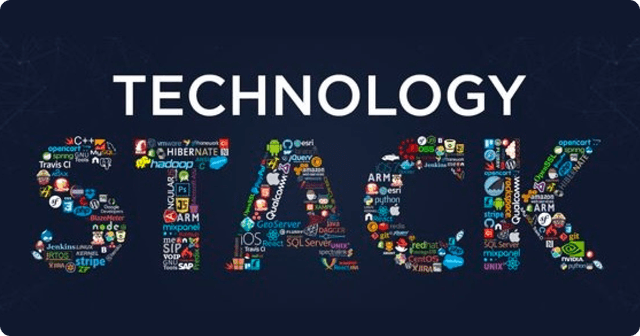
Introduction
React Native, the popular cross-platform mobile development framework, has undergone significant architectural changes in recent years. This blog post explores the latest architecture of React Native and how it's being adopted by big tech companies.
The New Architecture: Key Components
Here’s a breakdown of the new architecture components:
-
Fabric: A new rendering system that allows React Native to better synchronize JavaScript with native components. This enables smoother UI updates and improves performance in complex animations or large datasets.
// Fabric's direct manipulation of UI components import { View, Text } from "react-native"; const MyComponent = () => ( <View style={{ flex: 1, alignItems: "center", justifyContent: "center" }}> <Text>Fabric Rendering in Action!</Text> </View> ); -
TurboModules: Designed to improve the way JavaScript communicates with native modules. This component makes interactions faster and more efficient, especially when dealing with large-scale applications.
// Example of TurboModules enabling fast communication with native code import { NativeModules } from "react-native"; const { DeviceInfo } = NativeModules; const deviceName = async () => { const name = await DeviceInfo.getDeviceName(); console.log(name); }; -
Codegen: A tool that automatically generates type-safe bridges between JavaScript and native code, reducing the risk of bugs caused by mismatched types during development.
// Example of using Codegen to ensure type safety export interface DeviceInfoSpec extends TurboModule { getDeviceName(): Promise<string>; } const deviceName: string = await DeviceInfo.getDeviceName(); // Type-safe interface -
JSI (JavaScript Interface): A more efficient mechanism to directly call native functions from JavaScript. By eliminating the old bridge system, JSI significantly reduces the overhead, leading to better memory management and performance.
// JSI Example const jsiAdd = global.addNumbers(10, 20); console.log(jsiAdd); // Direct call between JS and Native
Benefits of the New Architecture
The shift to this new architecture brings multiple advantages:
- Improved Performance: Faster UI rendering and reduced interaction lag, particularly in complex apps with rich media and animations.
- Better Native Integration: Developers can easily bridge JavaScript code with native modules, offering a smoother experience.
- Type Safety: With Codegen, developers can now generate type-safe interfaces, reducing the chances of runtime errors.
- Efficient Memory Usage: The JSI helps optimize memory and processing, particularly in resource-intensive applications.
- Easier Debugging: Tools like Flipper integrate seamlessly with the new architecture, making debugging and profiling a more intuitive process.
Adoption in Big Tech
Several big tech companies have been early adopters of React Native, and some have already started exploring the New Architecture. While official details may not always be publicly available, here's how some industry leaders are benefiting:
- Facebook: As the creator of React Native, Facebook is expected to lead in adopting the new architecture for its apps, such as Facebook, Instagram, and Messenger.
- Microsoft: Known for using React Native in its mobile applications like Microsoft Teams and Office, Microsoft can leverage the improved performance to scale its apps.
- Shopify: A significant user of React Native, Shopify uses it to power mobile commerce platforms. The new architecture could enhance performance in handling high-traffic transactions.
- Walmart: Walmart’s mobile app is built on React Native, and transitioning to the new architecture could improve its user experience and reduce load times for millions of users.
React Native at Microsoft > React Native at Shopify > React Native at Walmart
Challenges in Adoption
Adopting the New Architecture also presents some challenges:
- Migration Complexity: Large-scale applications need to carefully manage migration from the old bridge system to Fabric and JSI, ensuring there are no performance regressions.
- Learning Curve: The introduction of TurboModules and Codegen means developers need time to familiarize themselves with these concepts.
- Third-party Compatibility: Some existing third-party libraries may not yet be compatible with the new architecture, potentially causing delays in migration.
For teams looking to adopt, these challenges are crucial to consider. However, with careful planning, the benefits far outweigh the costs.
Conclusion
React Native’s New Architecture represents a major leap forward in the world of cross-platform development. With its promise of better performance, memory efficiency, and native integration, it's no surprise that big tech companies are exploring it to future-proof their apps.
As the ecosystem evolves and more companies migrate, the new architecture is set to become the standard, benefiting both developers and end users. If you're developing with React Native, it's worth keeping an eye on these architectural advancements.
Read More

Importance of Independent Developers in Today’s Tech World
The tech industry is evolving at an unprecedented pace, with innovations transforming how businesses operate and how users interact with technology. In this fast-changing landscape, independent developers are playing an increasingly critical role.
June 1, 2024
View Article
One Vision. A Hive Full of Ideas 🐝
From indie dreams to hive reality — let’s make it happen together!
April 14, 2025
View Article
Technologies Powering IndieHyve: React, AWS, and Beyond
Discover the technologies powering IndieHyve's modern development ecosystem, from React and React Native to AWS and Docker.
July 15, 2024
View Article